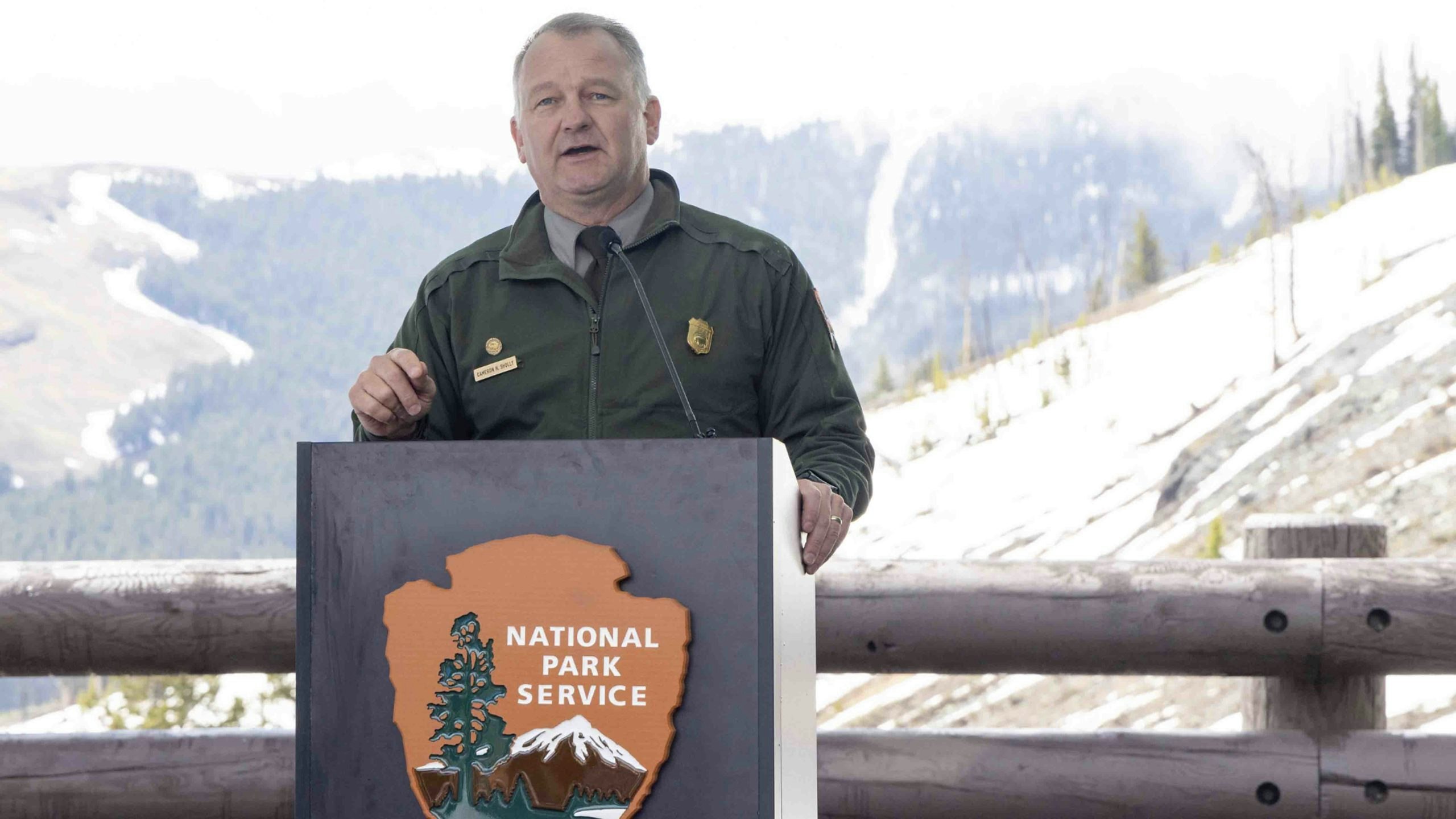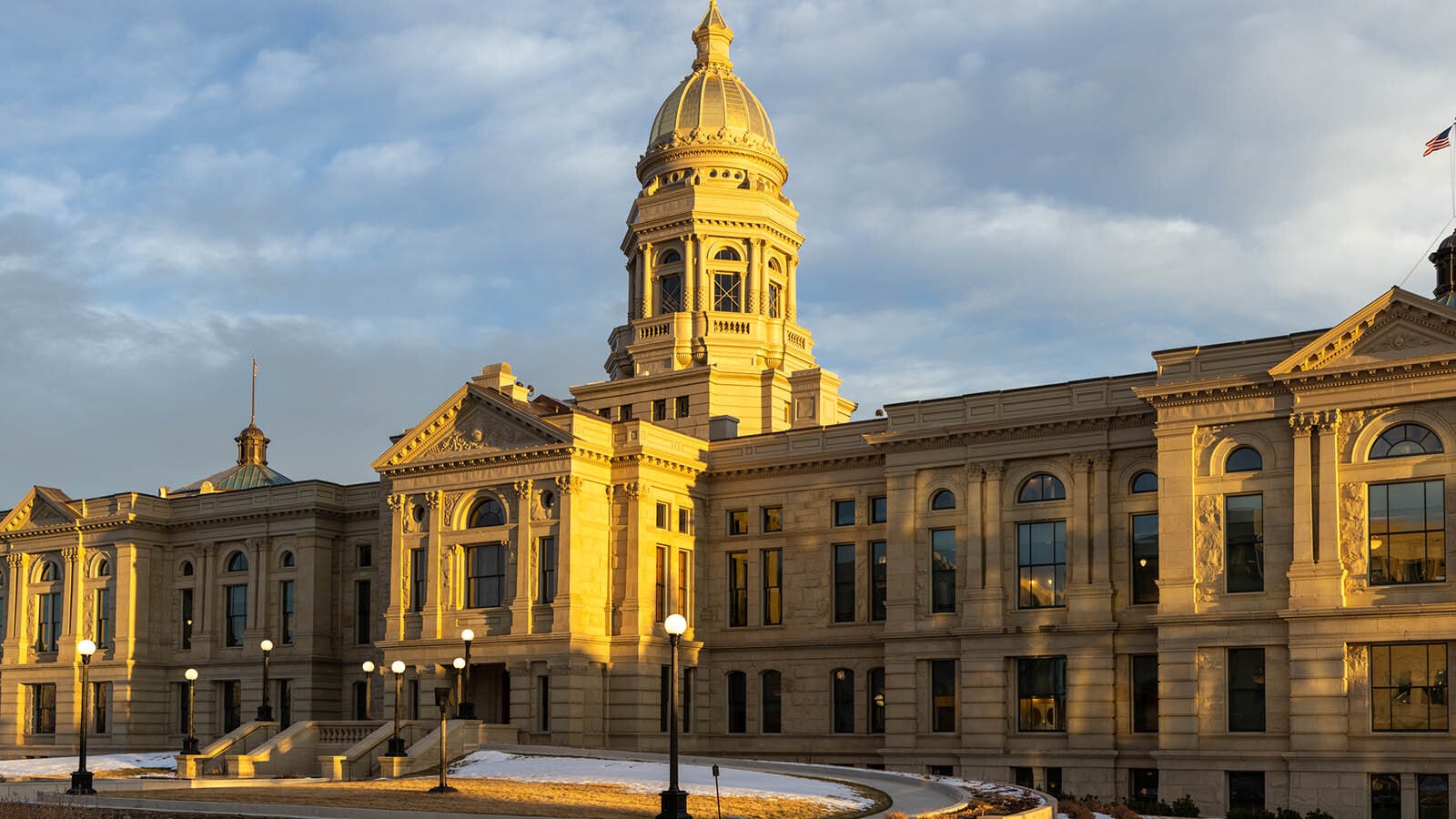Yellowstone National Park will adopt a reservation or timed entry system to prevent overloading of the park’s southern loop while its northern loop remains closed due to damage caused by flooding, according to park Superintendent Cam Sholly.
Meanwhile, President Joe Biden approved a disaster declaration for Montana, which took the brunt of the damage from the floods, with damages to the state’s roads estimated at $29 million.
Sholly, speaking during a town hall meeting with Cody residents Wednesday, said the park needs some way to control visitation to the park’s southern section to keep its infrastructure from becoming overwhelmed as people who planned to visit the park’s northern loop change their travel plans.
“What we can’t have happen is so much visitation on one loop of the park that the wastewater treatment, the road infrastructure fails and then we end up having to close the southern end of the park for a long period of time like the north end will likely be” he said.
The park was closed and more than 10,000 visitors were removed Monday as torrential rain and melting snow resulted in rivers being swollen to record levels.
The floods washed out portions of the roads in the park’s northern half and Sholly had said earlier it is unlikely the road between the Montana communities of Gardiner and Cooke City will be reopened this season. The park’s northern loop itself is expected to remain closed for an extended period of time.
Reservation System
Park officials are turning to a reservation/timed entry system in anticipation of larger visitation numbers in south Yellowstone, Sholly said, to allow as many people as possible into the park once it reopens, tentatively scheduled for Monday.
Sholly said the park is working with gateway communities to develop a workable system that will let people who had planned to visit still get an experience in the park, although it may not be as extensive as they originally planned.
It may take three to four weeks to develop the system, Sholly said, and until it is in place, people will be allowed to enter through the park’s east, south and west entrances without reservations, although some services may be limited.
As an example, he said the number of rooms available for overnight stays in the park will probably be reduced
“What we learned in COVID is that the more overnight occupancy we have, the higher the workload is for the park and for the staff,” he said. “If we’re going to have everybody able to come in without reservation for three weeks, then we need to minimize visitation in the overnight category. And then once the (reservation) system kicks in, we’ll increase the number of overnights to balance out with day use.”
No Unlimited
The park will not be able to handle unlimited day and overnight access while the north loop is closed, he said.
“What we can’t have is full overnight accommodations open and have full access for visitors through three entrances of day use,” he said. “It’ll be a predictable nightmare that will end up probably making us close the entrance stations in the middle of the day … which is going to cause a lot more heartburn with people.”
However, he added other services, including food and gasoline, will be available by the time the park reopens.
The reservation system being developed will be based in part in systems being used at other national parks, Sholly said.
While the system may not be perfect, it will help the park accomplish its goals of continuing to allow visitors to enter, he added, and it will be fine-tuned throughout the season to make sure it is working as intended.
Montana Damage
Montana suffered the largest amount of damage, with preliminary damage estimates to transportation infrastructure at $29 million.
To that end, President Biden has approved a disaster declaration for Montana after Gov. Greg Gianforte requested an expedited declaration.
Wyoming Declaration
Wyoming Gov. Mark Gordon was expected to sign an emergency declaration on Thursday although damage to Wyoming’s roads and bridges in the Yellowstone area was “minimal” on Wednesday, according to the governor’s office.
“This has been extraordinarily hard on a lot of people and we are doing all we can to assist,” Gordon said in a news release. “Thankfully, visitors have been evacuated and we can go about helping local communities, businesses and others address the historic impacts of this flood.”
Goodwill
Cowboy State Daily continued to receive stories Thursday of companies and individuals reaching out to help those in and around the park whose plans may have been disrupted by the floods or whose homes or belongings were damaged.
On Wednesday, a rental car company told a Florida family not to worry about their rental cars that they couldn’t return to the agency’s office.
On Thursday, U-Haul companies in Montana and Idaho announced they were offering 30 days of free storage and container usage near Yellowstone for people affected by the flooding.
“As our neighbors deal with this disaster and seek help with the recovery process, we want to provide them with a clean, dry place to store their possessions,” said U-Haul Area District Vice President Doug McIntier, who oversees operations in Idaho, Montana and Wyoming.
Where Is He?
Meanwhile, Gianforte came under fire on Thursday after leaving on a personal trip before the flooding occurred and failing to tell the public where he was.
A spokeswoman declined to tell the press where the governor traveled, leading to a hail of criticism in the state.
“In a moment of unprecedented disaster and economic uncertainty, Gianforte purposefully kept Montanans in the dark about where he was, and who was actually in charge,” Sheila Hogan, executive director of the Montana Democratic Party, said in a statement. “Again, we ask, where in the world is Gov. Gianforte?”
The Montana Free Press ran a story with a headline asking: “Where Is Greg Gianforte”
The article noted that the governor’s office would not disclose where Gianforte was despite “related requests over the past two days.”
A professor at Montana State University said the governor’s lack of communication was a big mistake.
“The fact that [the flooding] is so extreme and his office has just been pretty recalcitrant about where he is and what’s going on is not great,” Professor Eric Austin told the Montana Free Press.





